Based Adaptation

What is the role of community-based adaptation in addressing climate change ?
The text discusses the role of community-based adaptation in addressing climate change. It outlines seven key reasons why this approach is essential, including empowering local communities, tailoring solutions to specific local conditions, enhancing capacity and building resilience, promoting innovation and learning, reducing vulnerabilities and increasing preparedness, enhancing social cohesion and trust, and supporting sustainable development goals. Overall, the text emphasizes the importance of involving local communities in the adaptation process to build a resilient future in the face of climate change challenges.

What are some innovative examples of climate adaptation in developing countries ?
Climate adaptation is becoming increasingly important for developing countries, which often lack the resources to cope with the impacts of climate change. However, these countries are also finding innovative ways to adapt to changing environmental conditions. Here are some examples: 1. Integrated Watershed Management 2. Climate-Smart Agriculture 3. Ecosystem-Based Adaptation 4. Urban Green Infrastructure 5. Community-Based Adaptation

What are the ethical considerations in climate adaptation planning ?
This article discusses ethical considerations in climate adaptation planning, including fairness and justice, environmental sustainability, transparency and accountability, intergenerational equity, and cultural sensitivity. It emphasizes the importance of equitable distribution of resources, minimizing negative environmental impacts, involving stakeholders in decision-making processes, considering the needs of future generations, and respecting cultural diversity in adaptation efforts.

How do ecosystem-based adaptation methods contribute to climate resilience ?
Ecosystem-based adaptation (EBA) methods play a crucial role in building climate resilience by leveraging the natural capacity of ecosystems to mitigate and adapt to the impacts of climate change. These approaches focus on conserving, restoring, and promoting sustainable management of ecosystems to provide essential services that help communities cope with climate-related stresses. Below are several ways EBA methods contribute to enhancing climate resilience: Protection from extreme events, enhancement of biodiversity, promotion of sustainable livelihoods, regulation of water resources, carbon sequestration and storage, community empowerment and education, disaster risk reduction, and research and innovation.

What are some examples of successful adaptation strategies for climate-induced migration ?
Successful adaptation strategies for climate-induced migration include resilient infrastructure development, economic diversification, community-based adaptation, and environmental conservation and restoration. These approaches aim to increase community resilience, reduce reliance on climate-sensitive sectors, empower local decision-making, and protect ecosystems.

What are the benefits of community-based adaptation to climate change ?
Community-based adaptation (CBA) to climate change is a process where communities use their local knowledge, resources, and skills to cope with the impacts of climate change. CBA has several benefits that make it an effective approach to addressing the challenges posed by climate change. These benefits include improved resilience, enhanced social capital, increased adaptive capacity, and cost-effectiveness. Improved resilience is achieved through localized solutions and empowerment. Enhanced social capital is achieved through collaboration and cooperation, as well as capacity building. Increased adaptive capacity is achieved through flexibility and innovation. Cost-effectiveness is achieved through lower costs and sustainability. Overall, CBA offers numerous benefits for addressing the challenges posed by climate change.

What are the key trends in climate financing ?
The key trends in climate financing highlight a collaborative effort between public and private sectors, technology-driven solutions, international cooperation, an emphasis on resilience and adaptation, a focus on just transition and inclusive growth, and accountability and performance measurement. Governments are issuing green bonds, forming public-private partnerships, and establishing climate funds. Private sector innovations include impact investing, sustainable finance, and carbon credit trading. Technology is being used to increase transparency in climate finance flows, streamline access to climate finance, and identify investment opportunities. International cooperation is facilitated through global climate funds, bilateral and multilateral agreements, and alignment with sustainable development goals. Resilience and adaptation are receiving more funding, with insurance schemes and community-based adaptation initiatives gaining support. Just transition and inclusive growth are prioritized, with a focus on equitable energy transitions, gender equality, and economic opportunities. Accountability and performance measurement are ensured through results-based finance, monitoring and reporting mechanisms, and transparency and anti-corruption measures.

How can small island nations develop successful climate adaptation plans ?
The text provides a comprehensive guide on how small island nations can develop successful climate adaptation plans to protect their communities and ecosystems from the impacts of climate change, which include sea-level rise, storm surges, and extreme weather events. The suggested steps are grouped into several categories: assessing risks and prioritizing actions; building resilience through infrastructure; enhancing ecosystem resilience; community engagement and education; developing policies and legislation; finance and funding mechanisms; and monitoring and evaluation. Each category offers specific strategies and actions that small island nations can take to create effective climate adaptation plans.
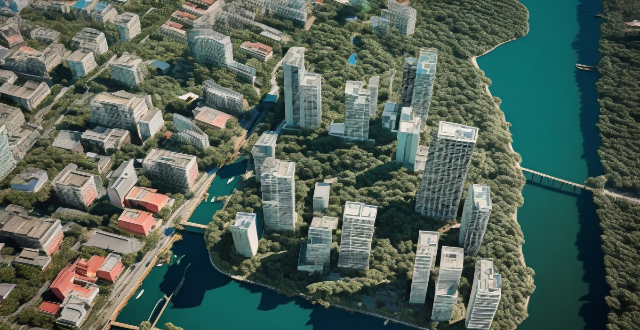
How do climate adaptation strategies differ between rural and urban areas ?
Climate adaptation strategies differ between rural and urban areas due to infrastructure, resources, community needs, and environmental impacts. Urban areas often have advanced technology and diverse stakeholders involved in adaptation planning, while rural areas rely more on local knowledge and community-based initiatives. Funding and resources are also key factors, with urban areas having better access to funding for large-scale projects and a diversified economy to support climate adaptation measures. In contrast, rural areas may have limited financial resources and dependence on agriculture, making them vulnerable to climate impacts. Community participation is crucial in both settings, but urban areas may have more platforms for participatory planning and decision-making processes, while rural areas benefit from strong community cohesion and collective action. Environmental impact considerations also vary, with urban areas facing challenges like the heat island effect and air pollution, while rural areas focus on natural resource management and watershed protection.

How can we ensure that climate change adaptation measures are equitable and just ?
The topic of ensuring equitable and just climate change adaptation measures is crucial for protecting vulnerable communities, avoiding inequality amplification, and promoting sustainability. Key principles include prioritizing the most vulnerable, transparency and public participation, equitable resource allocation, legislative and policy support, capacity building and education, and international cooperation. Implementing these principles involves assessment and planning, integration with development goals, and monitoring and evaluation. By following these guidelines, we can ensure that adaptation measures are fair and just for all.

How can we measure the effectiveness of community climate adaptation efforts ?
Measuring the effectiveness of community climate adaptation efforts is crucial for understanding their impact on resilience to climate change. Key steps include setting clear objectives, developing relevant indicators, collecting and analyzing data, transparent reporting, evaluating success, iterative improvement, community engagement, and policy alignment. By following these steps, communities can ensure their adaptation efforts are effective and continuously improved.
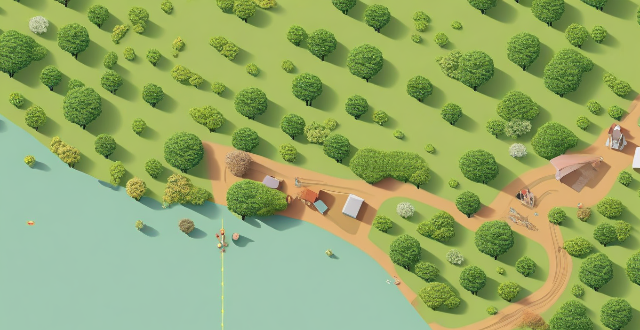
What is climate adaptation and why is it important ?
Climate adaptation is a proactive approach aimed at minimizing harm and exploiting the benefits of global changes by adjusting to expected impacts, such as protecting ecosystems and human health, avoiding costly damages, and preserving cultural practices. It involves structural adjustments like infrastructure reinforcement and water management, policy integration, public education, technological advancements in early warning systems, and the promotion of green infrastructure. Adaptation strategies are crucial for building community resilience, ensuring economic sustainability, and fostering long-term development.

What is the connection between climate change mitigation and adaptation goals ?
The text discusses the interconnected nature of climate change mitigation and adaptation goals, highlighting their distinct objectives and shared purpose of addressing global warming. Mitigation focuses on reducing greenhouse gas emissions to limit the magnitude and rate of climate change, while adaptation prepares for the inevitable impacts by enhancing resilience and reducing vulnerability. The two strategies complement each other, with some actions achieving both goals simultaneously. Investing in both leads to long-term benefits, making a comprehensive approach essential for managing climate change challenges.
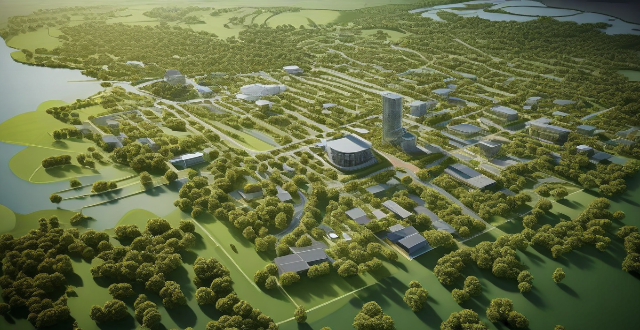
How can we encourage individuals and communities to take action on climate change adaptation ?
Encouraging individuals and communities to take action on climate change adaptation requires a multi-faceted approach that includes education, policy changes, economic incentives, community engagement, and technological innovation. This involves raising public awareness through workshops, media campaigns, and integrating climate change topics into educational curricula. Developing and implementing adaptation policies at local and national levels is crucial, along with promoting green infrastructure and sustainable practices. Offering financial incentives such as tax breaks and grants can encourage the adoption of energy-efficient technologies and eco-friendly products. Support for community-based projects is also essential, including funding for initiatives and capacity building. Fostering community leadership and encouraging civic participation through volunteer programs and town hall meetings can further inspire collective action. Promoting research and development, adopting advanced technologies, and using renewable energy sources are also vital components in this comprehensive approach. By working together, we can build a more resilient future for all.
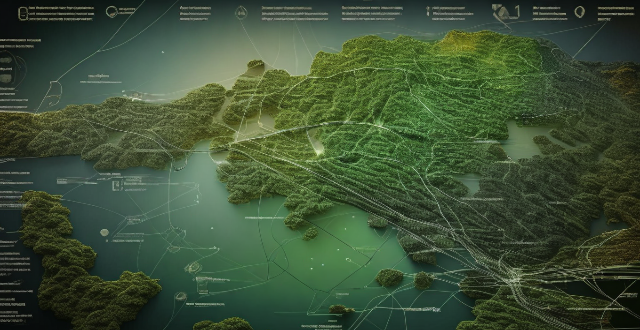
What role do urban green spaces play in climate adaptation strategies ?
Urban green spaces play a crucial role in climate adaptation strategies by providing cooling effects, carbon sequestration, flood control, and habitat preservation. To effectively incorporate these spaces into climate adaptation efforts, city planners should conduct assessments, develop comprehensive plans, collaborate with local communities, monitor and evaluate projects, and educate residents about the benefits of green spaces.
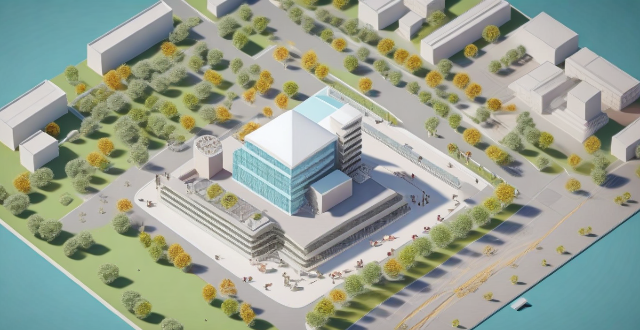
How does climate adaptation relate to sustainable development goals ?
Climate adaptation is a vital component of sustainable development goals (SDGs) as it helps reduce vulnerabilities and build resilience to the adverse effects of climate change, thereby contributing to the achievement of several SDGs. Relevant SDGs include Goal 1: No Poverty, Goal 2: Zero Hunger, Goal 3: Good Health and Well-being, Goal 6: Clean Water and Sanitation, Goal 11: Sustainable Cities and Communities, Goal 13: Climate Action, and Goal 15: Life on Land. Strategies for integration include policy coherence, financial investment, capacity building, stakeholder participation, risk assessment, research and innovation, and education and awareness. By addressing the challenges posed by climate change through effective adaptation strategies, nations can work towards creating more resilient societies that are better prepared to face future climate risks while continuing to progress towards other SDGs.
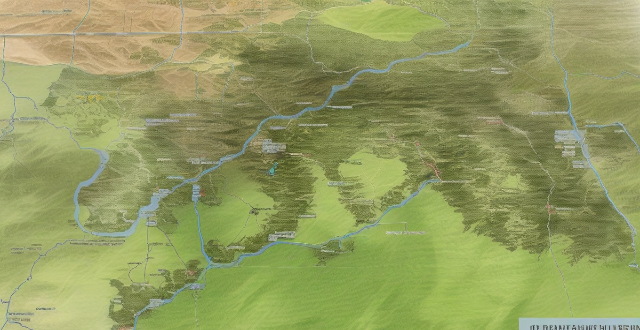
What are the most effective strategies for community climate adaptation ?
Effective strategies for community climate adaptation include risk assessment and planning, infrastructure upgrades, sustainable land use practices, and education and awareness. These strategies aim to reduce vulnerability and enhance resilience to the impacts of climate change.

How do climate adaptation strategies fit into environmental law frameworks ?
Climate adaptation strategies are vital for reducing vulnerability to climate change and fit into environmental law frameworks by providing a legal basis for implementation. These strategies involve measures to help communities and ecosystems adapt to changing climatic conditions. Environmental laws establish principles like the precautionary principle and intergenerational equity, guiding climate adaptation development. Integrating adaptation into existing environmental laws is crucial for effective implementation. Key components of adaptation strategies include vulnerability assessment, plan development, measure implementation, and progress monitoring. Challenges in implementing adaptation through environmental law include insufficient authority, resource constraints, and lack of coordination, but opportunities exist to enhance legal mandates, provide financial incentives, and promote cross-sector collaboration. Overall, climate adaptation strategies are essential within environmental law frameworks to ensure reduced vulnerability and enhanced resilience to climate change impacts.

How do climate adaptation measures vary across different regions ?
Climate adaptation measures are strategies and actions taken to reduce the impacts of climate change on human lives, ecosystems, and economies. These measures vary significantly across different regions due to factors such as geography, climate patterns, socio-economic conditions, and technological capabilities. Coastal and island communities face challenges like sea-level rise, storm surges and hurricanes, and erosion, while arid and semi-arid regions face water scarcity, desertification, and droughts. Mountainous regions face glacier retreat, changes in snowmelt patterns, and landslides and mudflows. Urban areas face challenges like heat island effect, flooding due to impervious surfaces, and air pollution exacerbated by heat waves. Arctic regions face permafrost thaw, changes in wildlife migration patterns, and infrastructure damage due to extreme cold. In conclusion, it is crucial for local governments, international organizations, NGOs, and community members to work together in designing and implementing effective adaptation strategies tailored to their unique circumstances.

How do climate adaptation policies integrate water resource management ?
Climate adaptation policies play a crucial role in water resource management by assessing climate change impacts, developing adaptation strategies, implementing and monitoring measures, securing finance and investment, and promoting education and awareness. These efforts aim to reduce vulnerabilities of human and natural systems to climate change, focusing on risks such as temperature changes, precipitation variability, and extreme events. Adaptation strategies include water conservation, infrastructure adaptations, legal and institutional frameworks, pilot projects, monitoring and evaluation, capital investment, operational costs, public education campaigns, and capacity building. This integration ensures water security for future generations by addressing the complex interactions between climate change and water resources.
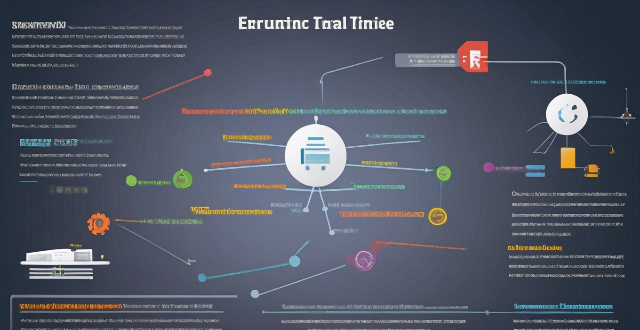
How can policymakers encourage private sector involvement in climate adaptation ?
To encourage private sector involvement in climate adaptation, policyTo encourage private sector involvement in climate adaptation, policy as creating incentives like tax policymakers can implement strategies such as creating incentives like tax breaks and subsidies, establishing clear regulations with compliance enforcement, facilitating information sharing through open data access and collaborative platforms, promoting public-private partnerships with joint projects and long-term commitments, enhancing capacity building via training programs and technical assistance, and recognizing and showcasing success stories through awards and media coverage. These steps will foster a collaborative environment where the private sector actively seeks opportunities to contribute to resilient and sustainable solutions for climate change challenges.

How can we raise awareness about the importance of community climate adaptation ?
To raise awareness about the importance of community climate adaptation, several strategies can be employed: 1. **Education and Outreach Programs**: Conduct workshops, engage schools, collaborate with media outlets, and develop informational materials to educate people about climate change and its implications. 2. **Community Engagement Initiatives**: Encourage public participation in discussions, foster partnerships with local organizations, and promote civic leadership to drive climate adaptation efforts. 3. **Visual Aids and Creative Approaches**: Use art, performances, exhibits, infographics, and other creative means to communicate the importance of climate resilience. 4. **Online Platforms and Social Media**: Leverage digital tools like social media campaigns, online forums, virtual reality experiences, and interactive apps to reach a wider audience. 5. **Policy Advocacy and Support**: Advocate for favorable policies, provide financial incentives, and support legislation that enhances community resilience against climate change.
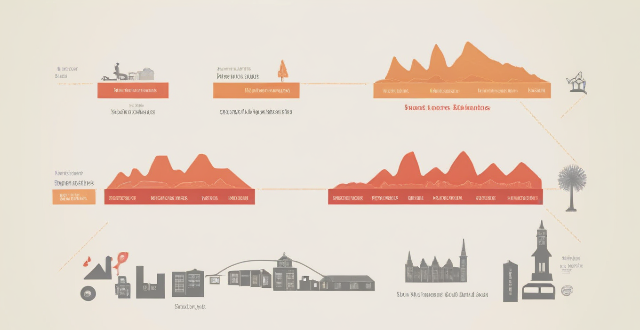
Can you explain Australia's points-based immigration system ?
Australia's points-based immigration system is a method to select skilled immigrants for permanent residency. The system assigns points based on age, education, work experience, and language proficiency. It aims to attract skilled workers who can contribute to the country's economy and fill labor market gaps. Applicants must meet health and character requirements and are placed into a pool of candidates for selection. The system provides transparency and fairness in the immigration process by using objective criteria to evaluate applicants.

What are some successful examples of community climate adaptation initiatives ?
Community climate adaptation initiatives are local efforts to prepare for and respond to the impacts of climate change. These initiatives can include a wide range of activities, from building resilient infrastructure to implementing sustainable land use practices. Here are some successful examples of community climate adaptation initiatives: 1. New York City's Coastal Zone Management Plan 2. Copenhagen's Cycling Infrastructure 3. Amsterdam's Water Management System 4. San Francisco's Urban Heat Island Mitigation Program 5. Curitiba's Bus Rapid Transit System 6. Rotterdam's Flood Protection Measures

What is the relationship between social inequality and access to resources for climate adaptation ?
The relationship between social inequality and access to resources for climate adaptation is influenced by economic, social, and political factors. Wealthier individuals often have more resources, while marginalized groups may face discrimination. Education plays a crucial role in raising awareness about climate change, and cultural beliefs can impact adaptation strategies. Government policies can either exacerbate or mitigate social inequality, and participatory decision-making processes are essential for equitable resource allocation. Addressing social inequality requires equitable resource allocation, capacity building, community-driven approaches, and targeted interventions for vulnerable populations.

What is the relationship between climate change and gender-based violence ?
The text discusses the correlation between climate change and gender-based violence, emphasizing that they intersect in several ways. It mentions how climate change exacerbates social inequalities, making women more vulnerable to gender-based violence, such as sexual assault and harassment during displacement and overcrowding caused by natural disasters. It also points out the economic impact on women who manage household resources during scarcity, potentially leading to domestic violence due to increased stress and tension. The text further highlights how climate change can reinforce harmful gender norms, affecting men's ability to provide for their families and leading to frustration and aggression towards women. It also notes the impact of climate change on women's access to justice, as legal institutions may be disrupted or overwhelmed by climate-related disasters, making it difficult for women to report incidents of gender-based violence or seek legal recourse. Lastly, it mentions the negative impact of climate change on mental health, which can increase the risk of gender-based violence. The text concludes by emphasizing the need for a comprehensive approach to address both problems, taking into account their intersection and differential impact on various populations, to create a more equitable and just world.

How do technology-based learning tools contribute to innovative teaching practices ?
This article discusses the role of technology-based learning tools in innovative teaching practices. It highlights how these tools can enhance student engagement, facilitate collaboration and communication, provide access to global resources, and enhance assessment and feedback mechanisms. The article also emphasizes the importance of personalized learning experiences and gamification techniques in making education more engaging and enjoyable for students. Overall, the article suggests that technology-based learning tools have the potential to revolutionize education by making it more interactive, accessible, and effective.

How can I incorporate more plant-based meals into my family's diet ?
Incorporating more plant-based meals into your family's diet can lead to improved health, weight management, and a reduced environmental impact. Here's how to do it: 1. **Understand the Benefits**: Improved health, weight management, and environmental sustainability are key advantages of a plant-based diet. 2. **Gradual Transition**: Start by replacing one or two meals per week with plant-based options to ease your family into the change. 3. **Meal Ideas**: Try Meatless Mondays, vegetable-centric dinners, and incorporating plant-based proteins like tofu and beans. 4. **Involve Your Family**: Get your family excited about the change by letting them choose recipes and shop for ingredients. 5. **Shopping Tips**: Buy fresh produce, stock up on staples like grains and legumes, and experiment with new foods. 6. **Education and Resources**: Use online resources like websites, YouTube channels, and cookbooks to learn about plant-based eating. 7. **Meal Planning and Preparation**: Plan weekly meals, consider batch cooking, and get creative with leftovers. 8. **Emphasize Flavor and Creativity**: Use herbs, spices, marinades, and sauces to add flavor, and don't be afraid to experiment with different cooking techniques.

Can you recommend a classic Italian pasta sauce that's not tomato-based ?
Certainly! If you're looking for a classic Italian pasta sauce that isn't tomato-based, one excellent choice is the Pesto Sauce. Here's a closer look at this delicious sauce: ### Ingredients: - Fresh basil leaves - Garlic - Pine nuts - Parmesan or Pecorino cheese - Extra virgin olive oil - Salt ### Preparation: 1. Gather all the ingredients to make a perfect batch of pesto. 2. Toast the pine nuts in a dry pan to enhance their flavor. 3. Blend the basil, garlic, toasted pine nuts, grated cheese, and extra virgin olive oil in a food processor until well blended but still slightly chunky. 4. Season with salt and possibly some pepper. 5. Mix the pesto with cooked pasta, adding some reserved cooking water if needed. ### Tips: - Use fresh basil for the best flavor. - Choose a good-quality extra virgin olive oil. - Adjust the cheese and garlic quantity based on personal preference. ### Variations: - For a Pesto alla Trapanese variation, use almonds instead of pine nuts, add tomatoes, and sometimes mint along with the basil. - Try different types of nuts such as walnuts for a Walnut Pesto. Pesto is not only versatile but also easy to prepare. It's a vibrant green sauce that's full of flavor, making it a perfect alternative to tomato-based sauces. Enjoy your pesto with pasta or use it in other dishes like sandwiches or as a dip.
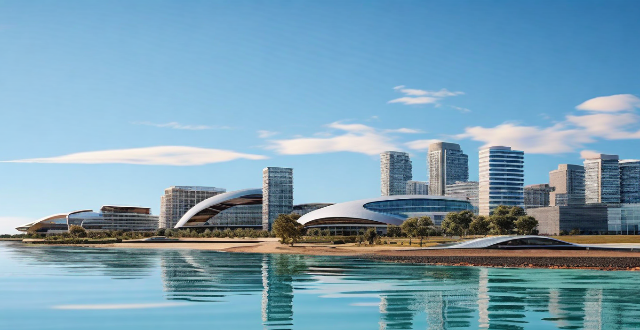
How can we adapt to the impacts of climate vulnerability ?
Adapting to the Impacts of Climate Vulnerability: This article discusses strategies to adapt to the impacts of climate change, including understanding risks, building resilience, enhancing community capacity, and long-term planning. It emphasizes the importance of assessing potential impacts on sectors such as agriculture, water resources, health, and infrastructure, and implementing both structural and non-structural measures to build resilience. The article also highlights the crucial role of communities in adaptation and the need for comprehensive adaptation plans that consider future scenarios and incorporate feedback mechanisms for continuous improvement.